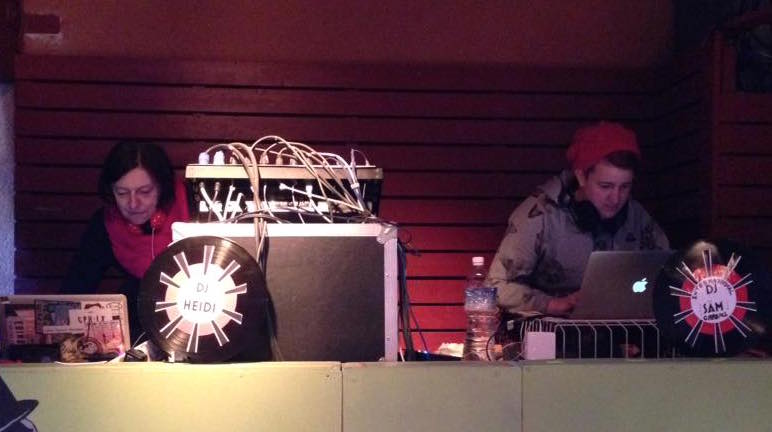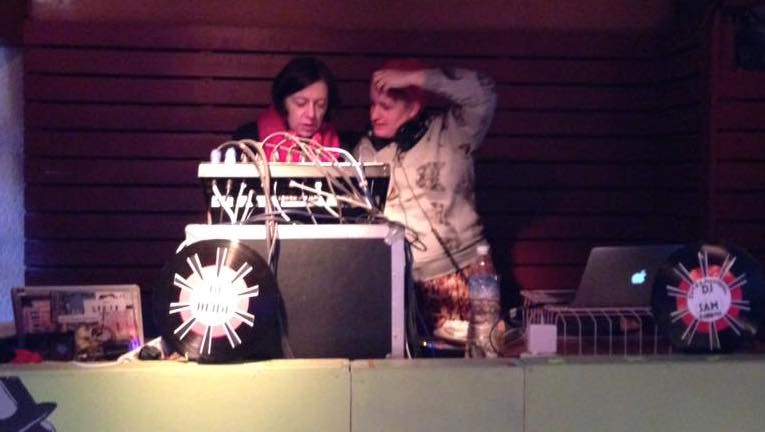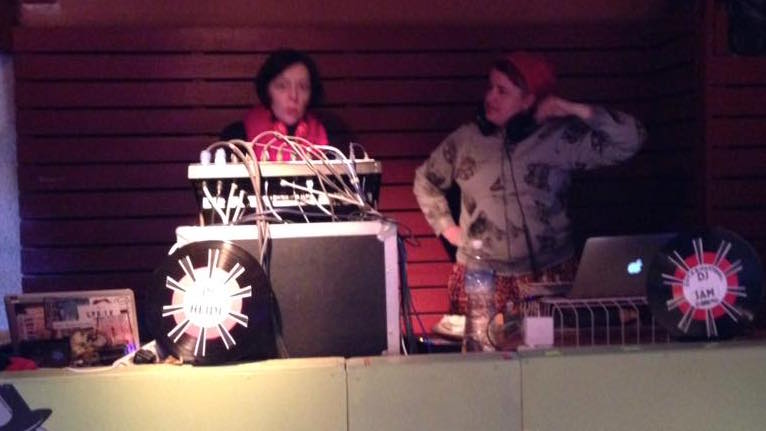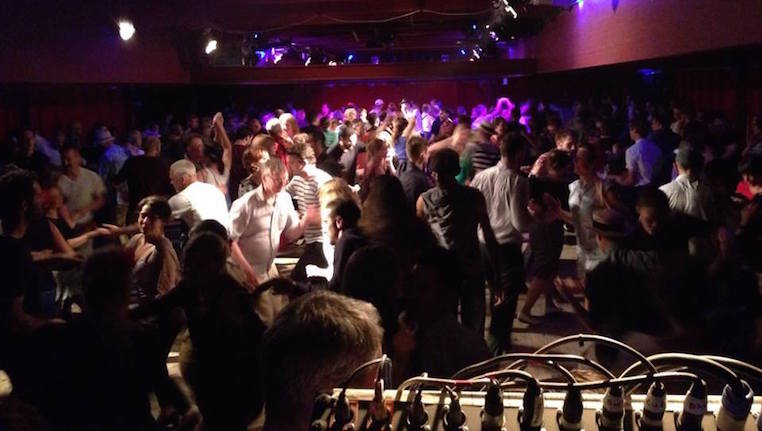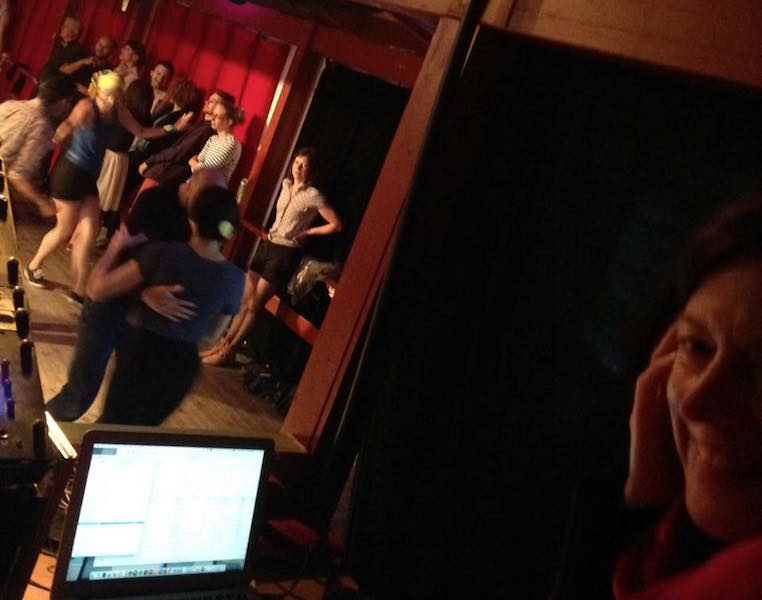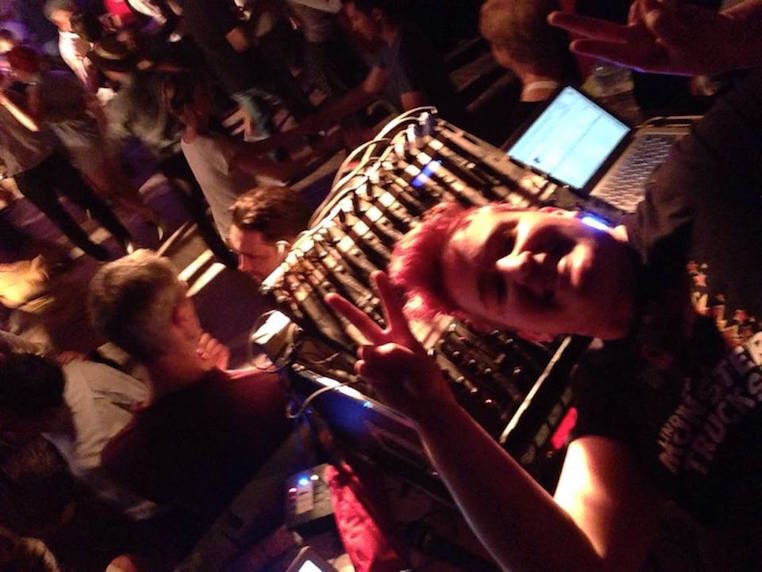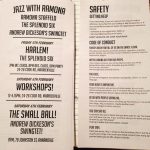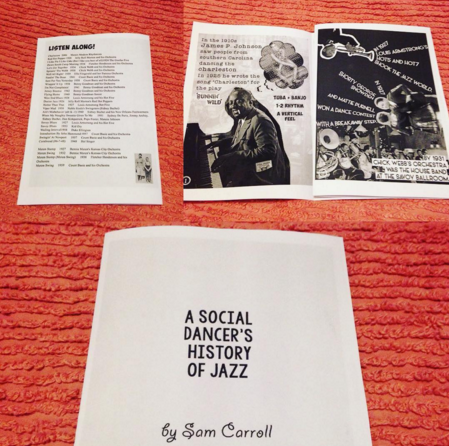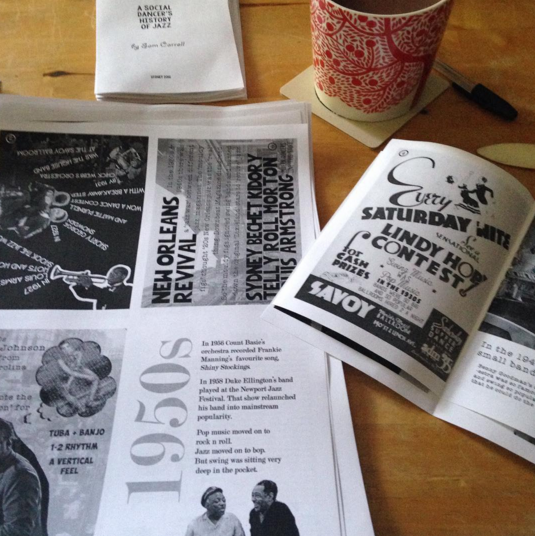I’m part of a very good facebook group about teaching lindy hop and swing dance, and there was a recent question about ‘heavy’ following, which referenced this 2010 article of Bobby White’s.
My first response was this:
One day someone will write an article about the heavy/light lead, and we’ll get to argue about whether or not it’s too do with men’s physical weight, physics, or their just not being a very good dancer.
…i’m sorry to be so snarky in such a friendly forum, but honestly. This discussion tires and depresses me.
While Bobby has updated his post with a little disclaimer, his post still circulates in the lindy hop community, frequently touted as an important or useful source of information. Me, I think it’s total rubbish. Questions about ‘heavy follows’ are rooted in a fundamentally unhelpful and flawed understanding of partner dancing. It is, as I’ve ranted elsewhere, based on the assumption that lindy hop is about successfully completing a series of moves. Leading them ‘well’ and following them ‘well’ for a ‘good dance’. In this context, if you can’t perfectly ‘follow’ the lead’s leading, you are a ‘bad follow’. This sort of thinking leads to nights where follows stand around the dance floor moaning that there are ‘no leads’, when there are in fact plenty of leads, it’s just that they are looking for leads who can set out a perfect sequence of moves for them to complete. It’s the sort of thinking that leads to women competing with each other for dances with particular men (yes, women do actually queue up around the edges of the dance floor), with big-headed leads convinced that they are the fucking business because they have these queues. It leads to the myth that we have a ‘lead shortage’ or, worse, ‘too many follows’, which in turn leads to bullshit registration deals for events, where leads receive cheaper registrations, or more flexible registration deadlines.
If you’ve read any of my posts before, you’ll know that I’ve really moved away from this idea of leading and following. If we stop thinking of a ‘good dance’ as a sequence of moves perfectly executed, then we can start thinking about a ‘good dance’ as one where we have just two rules: take care of the music, take care of your partner.
More importantly:
The term ‘heavy follow’ is profoundly sexist, places the power in the lead-follow dynamic firmly with the lead (who is usually male), and prioritises moving across the floor, performing a sequence of inflexible moves ‘perfectly’.
I think it’s fucked up, and I refuse to accept it as in any way legit.
But I think my immediate response to the post (which I’ve quoted above) wasn’t productive in this particular group, where the values we espouse in our jazz-centred dancing carry on into a discussion based on kindness, mutual respect, and listening to one another. So I apologised.
I did write a long comment in response, but when you find your comment is too long to fit in one comment on facebook, you know it’s time to write a blog post.
Interestingly, it seems Anaïs was writing a response at the exact same time I was. A post which sets out many of my own values, but in a much more gentle, productive way. Anaïs Sékiné’s lovely post about leading and following and dance as collaboration, is a nice alternative to the ‘heavy’ follow paradigm. I recommend reading it. It’s full of good feels.
But here is the long comment I wrote on facebook, but didn’t manage to post:
I don’t accept the premise of the ‘heavy’ or ‘slow’ follow.
I think it encourages a focus on moves-based dancing, rather than rhythm-based dancing. I also think it makes us focus on moving across the floor and executing moves perfectly, rather than listening to the music and connecting with another human being.
I’ve been thinking about my own dancing a lot lately, as I’ve done a few very useful and interesting workshops this year (Herräng most recently, but also the Little Big Weekend in May with Jenny and Rikard, and Snowball classes in December 2015). These, and the work I did last year, as well as lots of interesting talk in that facebook teaching group, and with my co-teachers, have been really inspiring. My general focus has been on simple shapes and solid rhythms, and is connected by the content and focus of the Frankie and Harlem Roots streams at Herräng in 2014 and 2015. I’ve also been inspired by Lennart Westerlund’s approach to teaching and learning.
Thinking about my own dancing hasn’t just been about getting my shit together (ongoing project, right?). It’s also about improving my dancing and understanding of what I do so that I can be a better teacher. And this in turn helps me improve my own dancing. I see my own limitations reflected in my teaching and hence in my students’ dancing: I’ve been thinking about how to dance faster, more relaxed, and with interesting rhythms at all tempos.
RE the swing out in particular, and how to make it work if one partner isn’t moving as fast as needed.
As a lead, my first response would be to change my plans. I don’t need a swing out to be a 360* turn. It can be 180* or 90* or any old degrees, fitting into the space on the floor, working with my partner, and the music.
I think this is the most important thing: leads need to work more actively with their partner. This is why I think we need to talk about ‘active leads’ rather than ‘active follows’: leads need to be able to change their swing outs and respond to what’s happening with their partner. Not just get cranky if a follow is ‘too slow’ to make the lead’s preferred swing out ‘work’.
1) Teaching translation: we say that to our beginners in week 1: You don’t have to have rules about the angle you cover. Just aim to be open, in closed, then in open. They immediately stress less.
My second response would be: am I asking the follow to move too far? My current bugbear is leads who ask the follow to go three million miles away in open, but still somehow run in and get around 360*, all at a million bpm. With this sort of swing out, the follows end up super fast and strong (in their bodies), but also more likely to send themselves miles away from their partners. So you get a kind of flattened out rhythm, where the emphasis is on horizontal movement across the floor, rather than a more nuanced rhythm-as-movement using different planes. I also see a lack of good, relaxed, swinging timing. There’s a lot of rushing, with a rhythmic emphasis on the extremes of the move – 3 and 4 in closed, and 7-8 in open. This emphasis often starts to look like a ‘dead spot’ where there’s a hold in the rhythm. Which is totally ok, but begins to ignore the music if it happens on every swing out.
So I fix this by staying closer to my partner, at all points of the swing out (closed and open). Rhythmically: I don’t go flat when the follow is in open – the rhythm I keep provides the timing for how long a follow should be traveling. And time = distance here.
2) Teaching translation: look at your partner; keep dancing leads, don’t stop when the follow goes into open. Don’t think of the rhythm as sets of 8, but as a continuous rhythm with the music.
My third and most important response: am I hauling arse? If a lead stands on the spot and asks the follow to do all the moving, then it’s twice as hard as it needs to be. If a lead steps up and moves their bodies, then the follow needs to cover half as much distance. If you stay closer together, then you can halve that distance again. And this means you have more time in the music for fun.
As a lead: I need step up and haul arse. I really need to hustle.
3) Teaching translation: leads, haul arse. Move your body. Do not let the rhythm drop. Everyone learns a new rhythm on their own first. Everyone has to carry the groove; it’s a shared rhythm. (all this keeps bodies active)
My fourth response: how am I oriented to my partner?
This is my current issue. I am trying to aim for a 3/4 profile for my partner. I describe this as the ‘perfect instagram selfie pose’ to our students: you want a 3/4 profile, and you want your weight on one foot, rather than split. If your butt’s out, then you are immediately ready to rumble. Or leap out from the blocks and beat Usain Bolt.
I am trying to stop myself ‘squaring up’ to my partner, because it’s inefficient, and makes it harder to recruit the bigger muscles that help me haul arse. It also lets your arms relax, and encourages an efficient weight change. A squared up profile is harder (this is 100% Rikard teaching btw).
4) Teaching Translation: 3/4 instagram perfect profile.
Fifth: I also try to be more ‘alert’ in my connection when we get into open. This is helped by having that 3/4 profile.
I use that triple step at the end of a swing out or move to say ‘Hello, I am ending the swing out earlier, I think, so please listen to see what happens next – we can choose something else to do.’
If I just go ‘dead’ or ‘limp’ in my arm as the follow gets out (at about 6), then the follow feels no signal, so they often just continue that last message or momentum I suggested. I’m not talking about ‘tension’ or any of that stuff – I’m talking about facing my partner, about moving my body, etc.
5) Teaching translation: leads, don’t let that rhythm or groove drop. Both partners – watch them move away from you, and be ready. Because you don’t know what jazz they’ll bring (a practical beginner exercise is just having them do a call and response jazz step – so as they move into open, one does a jazz step, and the other echoes it for 8 counts – they naturally have to watch each other, and stay closer together).
Sixth: out with the butts.
The other thing that’s important (when I’m following), is to not send myself so far away from my partner, and to check my posture. We’ve been talking to our intermediates about this – ‘out with the butts’ as eWa says. If you have your butt out, as a follow (but not sitting down into the shape), and you come out of a swing out sideways (ie the lead lets go earlier and doesn’t ‘steer’ the follow out with their left arm), then you are more engaged in your glutes, etc, and in a more athletic posture that helps you respond faster, or move faster, or just plain bring the shit.
Out with the butts is very important coming out of a swing out for follows. It stops them leading groin first (which makes it harder to balance or control yourself).
6) Teaching translation: out with the butts. Practical exercise: anything Frankie related.
Seventh: feel the love.
Asa and Daniel were crapping on about this in Herräng: get closer to your partner in closed. Treat it like an embrace. So they didn’t do this squaring up thing where the follows grip the lead’s bicep and clamp the lead’s right arm with their elbow. Instead they moved closer together. Learning from so many first gen revivalists in the Harlem Roots stream at Herräng stream, two things were made very clear: closed position is much closer (in a v-shape, where the follow’s arm can be further around the lead’s shoulder, and the lead’s arm further around the follow’s back). This embrace makes it easier to feel what your partner is doing with their body, too.
The second thing: follows are much more likely to do stuff like just go into open if they were sick of closed. Catrine, eWa, Asa – all those Swedes who worked with Frankie. None of them were worried about ‘backleading’ or ‘hijacking’. If they didn’t like a move, they just didn’t do it. And their leads were all 100% ok with this – they just saw it as normal. This signalled a fundamental shift in lindy hop ideology in the mid 2000s in America in particular: lindy hop follows stopped seeing this ‘just don’t do it’ as ok. They saw their goal as ‘follow perfectly’. To me, this is the most important point, the absolute total point of all this: FOLLOWS DON’T HAVE TO AIM TO ‘FOLLOW PERFECTLY’. Being a ‘good follow’ doesn’t mean ‘do exactly what the lead asks, perfectly and quickly.’ Being a ‘good follow’ means ‘go with your feels.’ Trust yoself.
7) Teaching Translation: when you’re in closed, check in with how you’re touching your partner. Ask them if this is ok. Remember that the way you touch your partner sends them information (eg the claw of panic from follows; the floating weirdo right hand from leads). If it doesn’t feel ok, tell your partner.
For me, these things have made lindy hop much easier: don’t move so far from my partner; feel the love in the embrace; out with the butts; perfect instagram selfie pose; take more time to feel the groove before you start dancing; clear rhythms.
Just in the few weeks since we’ve been back from Herräng and focussing on these things, we’ve seen massive changes in our students’ dancing. They can dance much faster, and have greater freedom to improvise.
I don’t worry about ‘follows being heavy’ because it’s simply not an issue. I don’t even recognise it as a thing.
I do worry much, much more about leads who don’t haul arse. I think the lazy arse lead is a much bigger issue than the ‘heavy’ or ‘slow’ follow. I also get very cranky about leads who never look at their follows: it makes for bad connection, bad vibes, and dancing that focuses on horizontal momentum rather than good solid rhythms, polyrhythms, and call and response. ie jazz.
…having said that, if a lead is physically slower or older or infirm or fragile (as with our lovely Extremely Elderly student), then hauling arse isn’t the issue. He has mad rhythm skills (tap dancer!), so the follows have to figure out how to make this work with him. Much more important skill set.
As Anaïs says in her gorgeous post,
Lindy hopping is about sharing through dancing and through jazz. That’s our common language. The rest is up to each and everyone of us.
As Lennart says,
…it is a very simple dance
As one of our beginners said in their first class
A swing out is when you are together and then you are away from each other.
And that’s it.

